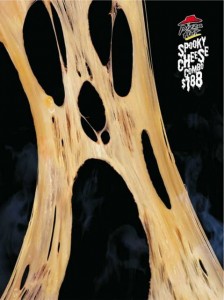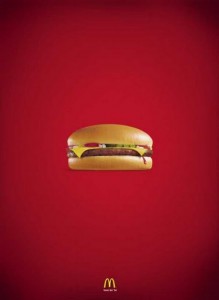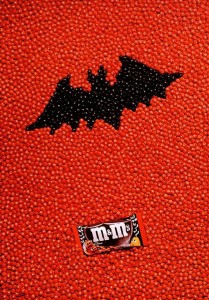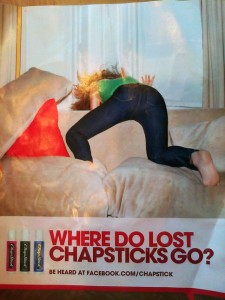 ChapStick—a brand whose marketing I don’t recall ever making any sort of impact. Until now. ChapStick posted a weird image on Facebook of a woman, backside in the air, looking for her ChapStick behind a couch . Many comments resulted objecting to the image. What does ChapStick do? They delete their comments. ChapStick’s ads with the line “Be heard at Facebook.com/ChapStick” start to look foolish. People keep commenting. ChapStick keeps deleting. People got angry. ChapStick got worried. People started commenting about why they can’t see their old comments. ChapStick can’t keep up with all the deleting. Comments are getting through, and they’re nasty. ChapStick for some weird reason doesn’t just delete the image, apologize, or even acknowledge the issue, beyond its infuriating deleting of comments. ChapStick apparently thinks the whole thing will just go away if it can silence enough of its “fans.” Not very smart! Burt’s Bees and Carmex must be thrilled. Larger image after the jump.
ChapStick—a brand whose marketing I don’t recall ever making any sort of impact. Until now. ChapStick posted a weird image on Facebook of a woman, backside in the air, looking for her ChapStick behind a couch . Many comments resulted objecting to the image. What does ChapStick do? They delete their comments. ChapStick’s ads with the line “Be heard at Facebook.com/ChapStick” start to look foolish. People keep commenting. ChapStick keeps deleting. People got angry. ChapStick got worried. People started commenting about why they can’t see their old comments. ChapStick can’t keep up with all the deleting. Comments are getting through, and they’re nasty. ChapStick for some weird reason doesn’t just delete the image, apologize, or even acknowledge the issue, beyond its infuriating deleting of comments. ChapStick apparently thinks the whole thing will just go away if it can silence enough of its “fans.” Not very smart! Burt’s Bees and Carmex must be thrilled. Larger image after the jump.
ChapStick finally responded—deleting the offending post (it’s gone from the ChapStick website, too) andadding a new Facebook post with a weird semi-apology. “We see that not everyone likes our new ad, and please know that we certainly didn’t mean to offend anyone!” the post says. “Our fans and their voices are at the heart of our new advertising campaign, but we know we don’t always get it right. We’ve removed the image and will share a newer ad with our fans soon!”
Our 2011 Top Picks – Video Advertising Campaigns
 This creative campaign surely will be topping many “top” lists. With over 62 million views, who could forget Little Darth, the endearing kid in the Vader mask attempting to use The Force on his dog, a peanut-butter sandwich and, more successfully, a Passat. Volkswagen gave this the ultimate paid placement in the Super Bowl but launched it the previous week on the web, where it garnered 14 million views before the game. With 600 placements, the video is on pace to become one of the most-watched viral ads of all time.
This creative campaign surely will be topping many “top” lists. With over 62 million views, who could forget Little Darth, the endearing kid in the Vader mask attempting to use The Force on his dog, a peanut-butter sandwich and, more successfully, a Passat. Volkswagen gave this the ultimate paid placement in the Super Bowl but launched it the previous week on the web, where it garnered 14 million views before the game. With 600 placements, the video is on pace to become one of the most-watched viral ads of all time.
http://www.youtube.com/watch?v=R55e-uHQna0
Celebrities are Tweeting for Dollars
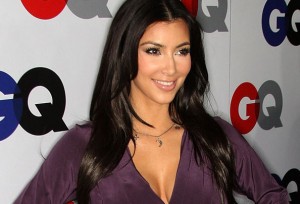 The value of celebrity partnerships and endorsements with major brands for commercials, print ads, music videos has already shown it’s marketing prowess and profitability for both parties. There is now a new channel for celebrities to prove their star power – Paying for Tweets. Paying a celebrity thousands of dollars to promote your company in 140 characters or fewer may seem crazy. But a growing number of businesses are setting aside marketing dollars to do just that. For instance, Best Buy recently tapped reality star Kim Kardashian (Kim demands $10,000 every time she Tweets about a product) to tweet about its cell phones and Microsoft hired entertainment mogul Diddy to tout its mobile tagging service, Microsoft Tag, to his legion of Twitter followers. Any company can snag an endorsement from a star using services that connect advertisers with tweeters—for a price, of course.
The value of celebrity partnerships and endorsements with major brands for commercials, print ads, music videos has already shown it’s marketing prowess and profitability for both parties. There is now a new channel for celebrities to prove their star power – Paying for Tweets. Paying a celebrity thousands of dollars to promote your company in 140 characters or fewer may seem crazy. But a growing number of businesses are setting aside marketing dollars to do just that. For instance, Best Buy recently tapped reality star Kim Kardashian (Kim demands $10,000 every time she Tweets about a product) to tweet about its cell phones and Microsoft hired entertainment mogul Diddy to tout its mobile tagging service, Microsoft Tag, to his legion of Twitter followers. Any company can snag an endorsement from a star using services that connect advertisers with tweeters—for a price, of course.
How much does it cost for a celebrity endorsement? Below is a sampling of stars for hire on the SponsoredTweets platform.
- Fee per tweet
- Number of followers
Lindsay Lohan
$2,353
2,472,484
Frankie Muniz
$208
119,789
Jose Canseco
$3,900
400,475
Soleil Moon Frye
$5,850
1,449,763
Lance Bass
$134.33
104,288
Mike Tyson
$3,250
851,168
JWoww
$2,353
1,549,310
Tyrese
$4,550
1,595,225
Khloé Kardashian
$8,235.50
2,856,036
Source: SponsoredTweets
Creative Halloween Ad Designs
What’s the Cost of Prime Time?
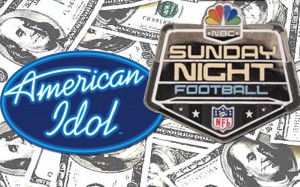 So you want to run your product’s ad during some of the most coveted prime time TV slots? Well, you may have to crack open that “piggy-bank”.
So you want to run your product’s ad during some of the most coveted prime time TV slots? Well, you may have to crack open that “piggy-bank”.
The costliest prime-time show ad space on this year’s schedule is tied between “American Idol” and NBC’s “Sunday Night Football”. The average cost of running a 30-second prime time ad in “Idol” runs between $468,100 and $502,900, while the average cost of a 30-second ad in NBC’s much-watched Sunday Night football contest is $512,367.
While that might sound as if football has trounced the veteran Fox singing program, the tally is relative since “Idol’s” prices tend to go up as the show reaches its finale. According to an Ad Age survey, some spots in “Idol” were going for as much as $640,000.
Other Top Most Expensive 30 second Spots include:
Fox’s “X Factor” is the most expensive new program for advertisers, commanding an average of $320,000 for a 30-second spot for its Wednesday-night run.
Fox’s “Glee,” which commands an average of $267,141
“Family Guy,” which notches an average cost of $264,912
“The Simpsons,” which costs an average of $254,260
CBS’s “Two and a Half Men,” which brings in an average of $252,418
ABC’s “Modern Family,” lures an average of $249,388 per 30-second commercial.
Sunday, filled with football and animated programs on Fox, remains the most expensive night on TV for marketers, as it has for several years. Thursday, once the dominant night, continued its run in second place.
